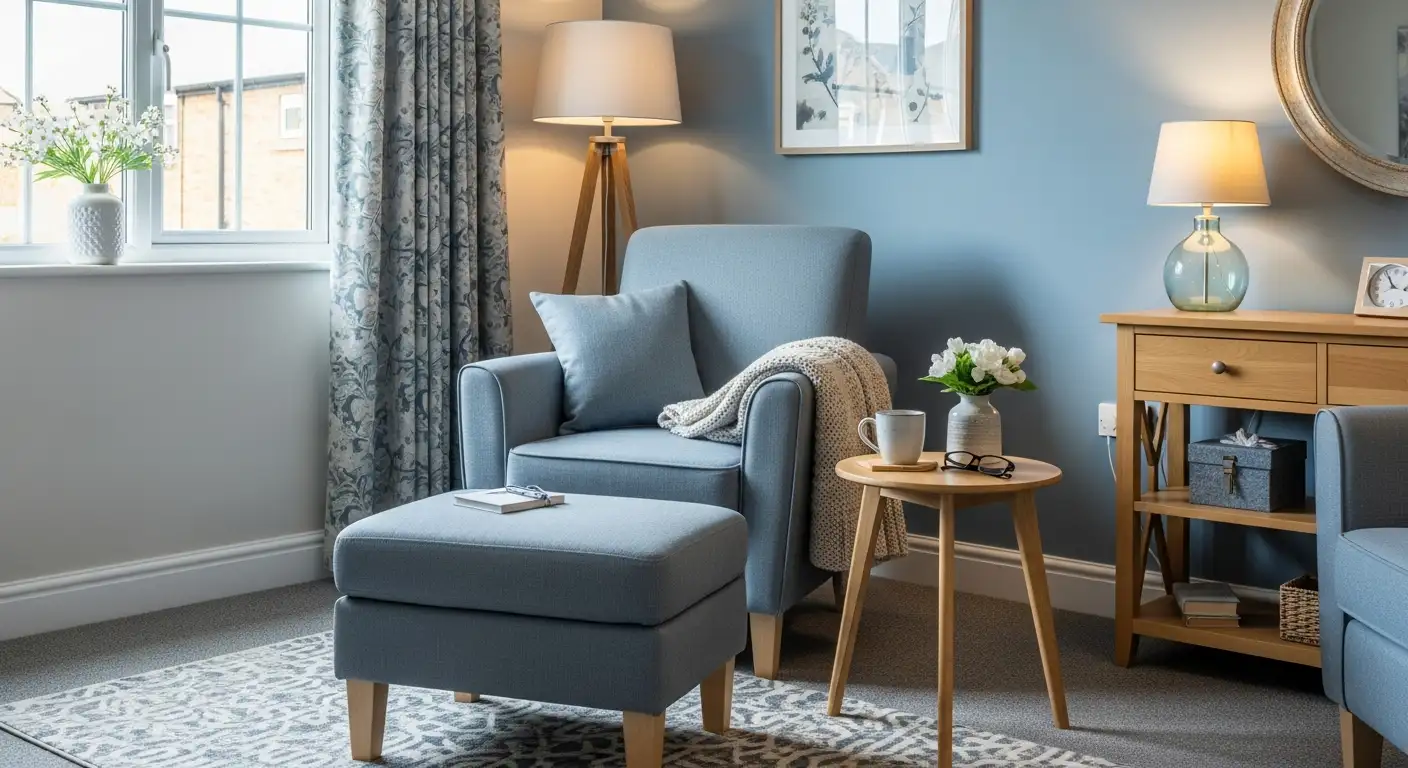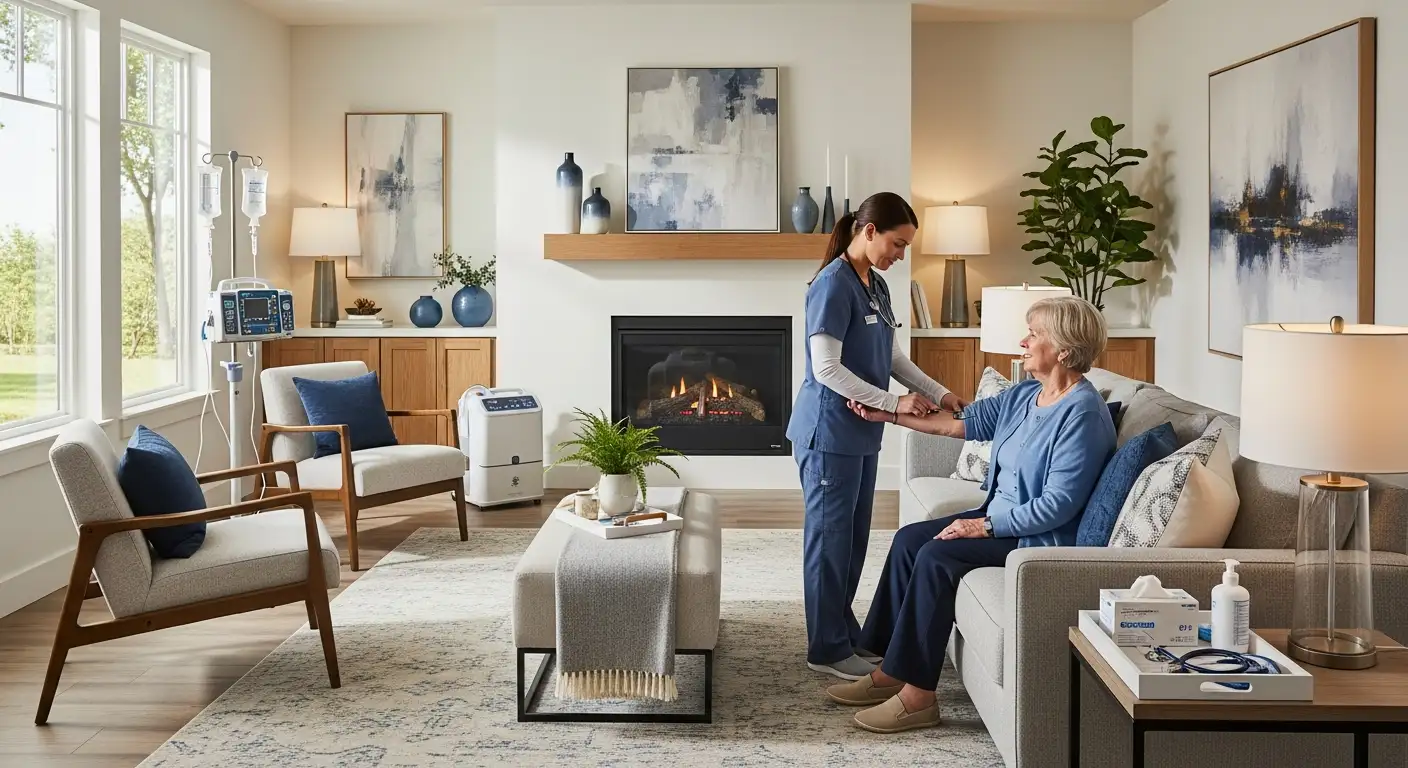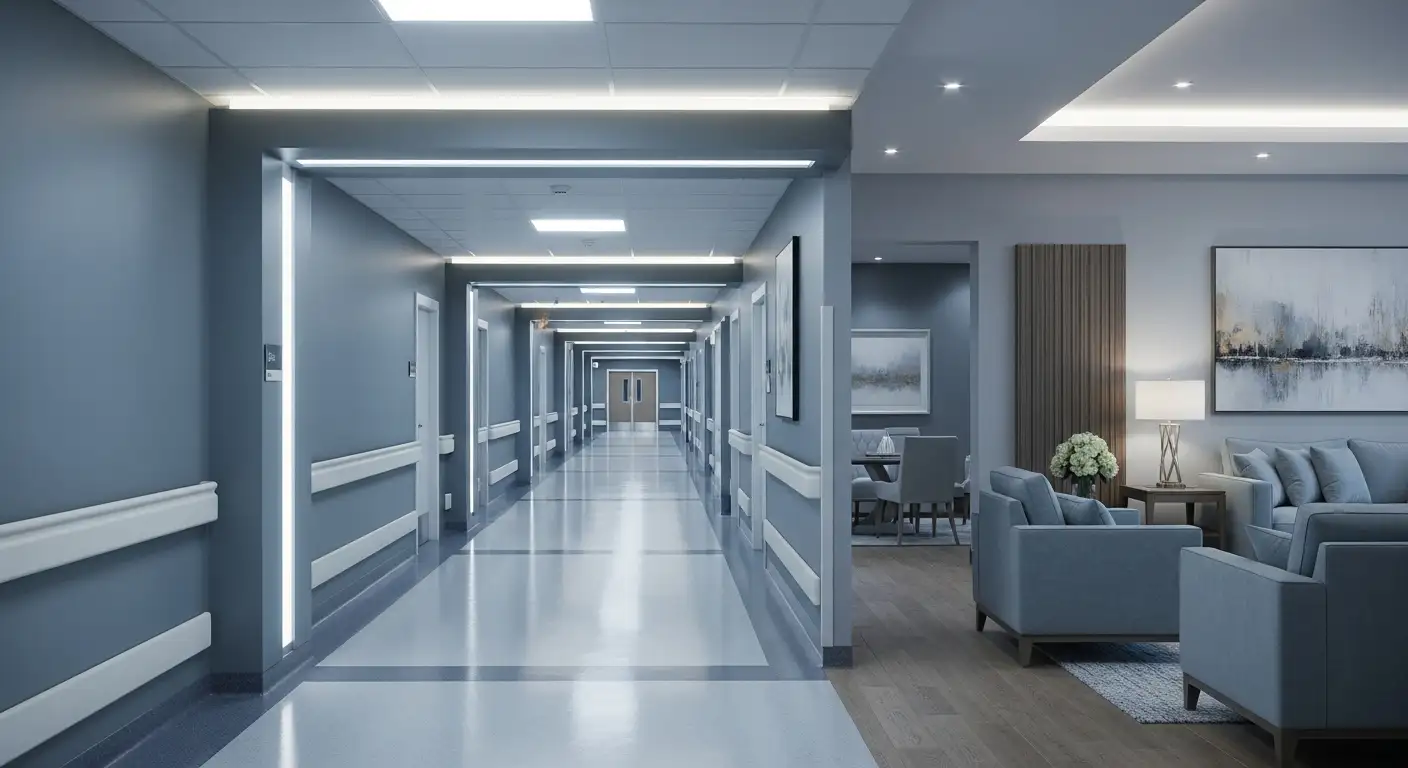Home Adaptations for Aging in Place
As individuals age, the desire to remain in the comfort of their own homes becomes increasingly important. Aging in place refers to the ability of older adults to live independently in their own homes for as long as possible, promoting safety, accessibility, and comfort. This approach recognizes the value of maintaining familiar surroundings, social connections, and a sense of autonomy as individuals age.

Understanding Aging in Place
Aging in place is a concept that recognizes the importance of allowing older adults to continue living in their own homes, enabling them to maintain their independence and quality of life. It involves adapting the living environment to cater to the specific needs and challenges faced by older adults. By implementing home modifications and adaptations, seniors can navigate their homes more safely and comfortably, reducing the risk of accidents and promoting overall well-being.
Importance of Home Modifications
Home modifications are crucial for successful aging in place. These modifications focus on key areas of the home, such as the bathroom, kitchen, and bedroom/living room, to ensure they are safe, accessible, and convenient for seniors. Some common home modifications include:
- Installing grab bars: These provide stability and support in the bathroom, helping to prevent falls.
- Widening doorways: Making doorways wider allows for easier navigation with mobility aids such as walkers or wheelchairs.
- Adding ramps: Ramps replace stairs, allowing seniors with mobility challenges to move freely in and out of their homes.
- Lowering countertops: Adjusting the height of countertops in the kitchen allows seniors to perform tasks comfortably without straining.
- Rearranging furniture: Rearranging furniture can create more open and accessible living spaces, reducing the risk of tripping or bumping into obstacles.
Professional caregivers can assist in identifying necessary modifications and connecting seniors with reliable contractors specialized in elderly care. By making these adaptations, older adults can maintain their independence and continue to live comfortably in their own homes.
Adapting the home environment is just one aspect of supporting aging in place. Technology and innovations also play a significant role in enhancing seniors' independence, safety, and well-being. Smart home devices, medical alert systems, and assistive technologies like wearable devices and health monitoring apps can provide additional support and peace of mind for seniors and their loved ones.
In addition to home modifications and technological solutions, home care services can be an invaluable resource for supporting aging in place. Professional caregivers provide assistance with daily activities, such as meal preparation, medication management, light housekeeping, transportation, and companionship. They play a crucial role in promoting independence, ensuring safety, and providing companionship for seniors, helping them maintain their social connections and overall well-being.
By understanding the concept of aging in place and the importance of home modifications, individuals can create a living environment that supports their desire to age gracefully in the comfort of their own homes. Whether through physical adaptations, technological advancements, or the support of professional caregivers, aging in place can provide older adults with the freedom, independence, and sense of belonging they deserve.
Financial Assistance Programs
For individuals considering home modifications to age in place, financial assistance programs can be valuable resources to help offset the costs. These programs provide grants and loans to eligible individuals, ensuring that necessary home adaptations are within reach.
Government Grants and Loans
The U.S. Department of Housing and Urban Development (HUD) offers state and local home modification grants and loans. Each state provides a list of resources, including housing and homeownership information, which often includes grants for home repairs [3]. These grants and loans aim to support homeowners in making their homes more accessible and accommodating for aging in place.
The U.S. Department of Veterans Affairs (VA) also provides grants for home modifications. The Specially Adapted Housing (SAH) grant offers up to $117,014 for fiscal year 2024 to help modify a home for qualifying service-related disabilities. The Special Home Adaptation (SHA) grant provides up to $23,444 for FY 2024 to assist with home modifications. Furthermore, the Temporary Residence Adaptation (TRA) grant offers up to $47,130 for SAH-qualified individuals and up to $8,415 for SHA-qualified individuals in FY 2024. These grants empower veterans to adapt their homes to meet their specific needs.
The U.S. Department of Agriculture (USDA) provides Rural Housing Repair loans and grants for rural homeowners with very low income. Homeowners aged 62 and older can qualify for grants up to $7,500, while loans, which do not have an age requirement, can be as high as $20,000. The loans have favorable repayment terms, with a low interest rate of 1% and a repayment period of 20 years. This assistance ensures that rural homeowners have access to the necessary funds to modify their homes.
Nonprofit Organizations Support
Nonprofit organizations also play a significant role in providing financial assistance for home modifications. These organizations often prioritize accessibility and provide funding or assistance based on income levels.
Rebuilding Together is a nonprofit group that brings together volunteers to make homes safer and more livable for low-income families, older adults, and individuals living with disabilities. Through their efforts, they provide assistance with accessible-home modifications.
Modest Needs is another nonprofit organization that offers support for accessible-home modifications. They provide Self-Sufficiency Grants that cover various expenses, including home modifications. These grants are available to individuals based on income qualifications, ensuring that financial constraints do not hinder the ability to make necessary adaptations.
By exploring government grants, loans, and nonprofit organizations, individuals seeking financial assistance for home modifications can find the support they need to make their homes safer, more accessible, and suitable for aging in place. These programs ensure that financial constraints do not become barriers to maintaining independence and comfort in one's own home.
Common Home Modifications
When considering aging in place, it is essential to make certain modifications to the home to ensure safety, accessibility, and comfort for older adults. Common home modifications for aging in place include bathroom adaptations, kitchen adjustments, and accessibility enhancements.
Bathroom Adaptations
Bathroom modifications play a crucial role in enhancing safety and accessibility for older adults. Installing grab bars in strategic locations, such as near the toilet and in the shower, can provide stability and support while maneuvering in the bathroom. Other bathroom adaptations may include:
- Non-slip flooring to reduce the risk of falls.
- Lever-style faucets and door handles that are easier to operate for individuals with limited dexterity.
- Walk-in showers, which are preferred over walk-in tubs for aging individuals. The cost of a walk-in shower typically ranges from $10,000 to $12,000, including installation. Roll-in showers, with lower curb heights, cost between $11,000 to $13,000. Customizations such as premium finishes and accessories can increase the overall cost.
Kitchen Adjustments
Making adjustments to the kitchen can greatly improve functionality and convenience for older adults. Some kitchen modifications to consider include:
- Lowering cabinets and sinks to a more accessible height, reducing the need for excessive bending or reaching [1].
- Installing pull-out shelves or drawers to enhance accessibility and organization.
- Lever-style handles on cabinets and faucets for easier gripping.
Accessibility Enhancements
Enhancing overall accessibility in the home is crucial for aging in place. This can be achieved through various modifications, such as:
- Widening doorways to accommodate mobility aids like walkers or wheelchairs. The cost of widening doorways typically ranges from $700 to $2,500 per doorway.
- Installing ramps to provide barrier-free access to the home. The cost of wheelchair ramps can range from $950 to $3,000 depending on factors such as length and materials used.
- Incorporating non-slip flooring throughout the home to reduce the risk of accidents and create a safer living space.
- Adding grab bars in strategic locations throughout the home to provide stability and support when needed. The cost of grab bars typically ranges from $100 to $500 depending on factors such as materials and installation.
By implementing these common home modifications, older adults can maintain their independence and safety while aging in place. It's important to assess individual needs and consult with professionals to determine the most appropriate modifications for a specific home and its residents.
Technological Solutions
As technology continues to advance, it plays a significant role in creating a safe and supportive environment for aging in place. Technological solutions such as smart home devices and medical alert systems offer enhanced safety, convenience, and peace of mind for older adults.
Smart Home Devices
Smart home devices are revolutionizing the way we interact with our living spaces. These devices, equipped with various sensors and interconnected through the internet, provide older adults with increased control and accessibility within their homes. Smart home devices can include:
- Smart thermostats: These devices allow for remote temperature control and can adapt to individual preferences, ensuring comfort while conserving energy.
- Smart lighting: With voice commands or smartphone apps, older adults can control the lighting in their homes, improving visibility and reducing the risk of falls.
- Smart door locks: These locks offer keyless entry options and can be remotely controlled, providing convenience and enhanced security.
- Smart home monitoring systems: These systems use cameras and sensors to detect movement, monitor activity, and provide remote access for caregivers to check on their loved ones.
By integrating smart home devices, older adults can maintain their independence while enjoying a safer and more convenient living environment.
Medical Alert Systems
Medical alert systems are another valuable technological solution for aging in place. These systems provide a quick and reliable way for older adults to call for help in case of emergencies or accidents. They typically consist of a wearable device, such as a pendant or wristband, and a base station connected to a monitoring center. Some key features of medical alert systems include:
- Emergency call button: The wearable device is equipped with a button that, when pressed, sends an immediate alert to the monitoring center, connecting the older adult with trained professionals who can dispatch assistance.
- Fall detection: Some medical alert systems offer fall detection capabilities, automatically triggering an alert if a fall is detected, even if the individual is unable to press the emergency button.
- Two-way communication: The base station allows for two-way communication between the older adult and the monitoring center, enabling clear and timely communication during emergencies.
- GPS tracking: Certain medical alert systems incorporate GPS technology, providing the ability to locate the individual in case they are outside their home during an emergency.
Medical alert systems offer peace of mind for older adults and their loved ones, ensuring that help is just a button press away in case of a medical emergency or a fall.
By embracing smart home devices and utilizing medical alert systems, older adults can leverage technological advancements to enhance their safety, independence, and overall well-being while aging in place. These solutions, along with other home modifications, contribute to creating a supportive and secure environment that allows older adults to maintain their desired lifestyle.
Cost Considerations
When it comes to aging in place and making home modifications, cost considerations play a significant role. The expenses associated with home adaptations for aging in place can vary depending on several factors, including the resources available in the community, the design and condition of the home, and the type and amount of services needed for safety and comfort [5].
Estimated Costs of Modifications
The cost of age-proofing a home can range from smaller, more affordable modifications to larger-scale projects. Here is an overview of some estimated costs for common home modifications:

It's important to note that the costs mentioned above are approximate and can vary depending on factors such as the location, complexity of the modification, and any additional features or customization required. For those living in older homes, age-related renovations could range from $10,000 to $100,000, depending on the condition and design of the home [5].
Financial Planning for Aging in Place
Given the potential expenses involved in home modifications for aging in place, it's crucial to consider financial planning. Here are a few options to explore:
- Government Grants and Loans: The U.S. Department of Veterans Affairs offers grants such as the Specially Adapted Housing (SAH) grant, Special Home Adaptation (SHA) grant, and Temporary Residence Adaptation (TRA) grant to help modify homes for qualifying individuals with service-related disabilities. These grants provide financial assistance ranging from up to $8,415 to $117,014, depending on the program and fiscal year [3].
- Nonprofit Organizations Support: There are nonprofit organizations that provide financial assistance or low-interest loans to help with home modifications for aging in place. Research local organizations and programs that specifically cater to the needs of older adults to explore potential funding options.
- Personal Savings and Financial Resources: Planning ahead and setting aside funds specifically for home modifications can help cover the costs associated with aging in place. Consider consulting with a financial advisor to explore strategies for saving and investing to meet these future needs.
- Home Equity Loans or Reverse Mortgages: For homeowners, utilizing home equity through loans or reverse mortgages can provide financial flexibility for home modifications. However, it's important to carefully evaluate the terms, interest rates, and potential impact on inheritance or future plans.
By considering these options and planning ahead, individuals can better navigate the financial aspects of aging in place and ensure that necessary home modifications can be made to support their safety, comfort, and independence.
Impact of Home Modifications
Making home modifications to accommodate aging in place has a significant impact on the well-being and independence of individuals. These modifications enhance the overall quality of life for those with care needs, such as older adults and people with disabilities. Two key areas where home modifications have been found to make a positive impact are independence and well-being, and a reduction in care hours.
Independence and Well-being
Home modifications have been shown to promote independence, autonomy, and self-care for individuals living at home with care needs. These modifications can range from major structural changes like adding ramps, lifts, or widening doors to minor non-structural additions like grab rails and handrails. By adapting the home environment to meet specific needs, individuals can navigate their living spaces safely and comfortably, improving their overall well-being.
Home modifications also address specific challenges associated with aging, such as vision reduction. Approximately one in three individuals experience some form of vision reduction by the age of 65. Loss of vision from conditions like cataracts, age-related macular degeneration, glaucoma, and diabetic retinopathy can lead to depression and functional limitations. Home modifications for individuals with low vision focus on adequate lighting and contrasting colors to identify hazards [7]. These modifications not only improve safety but also contribute to a sense of independence and well-being.
Reduction in Care Hours
Home modifications have been found to reduce the number of care hours required for individuals receiving community care. A study conducted in Australia found that home modifications resulted in a 42% reduction in care hours per week for community care recipients with an average age of 72 years. Informal care was reduced by 46% and formal care by 16% following home modifications.
The same study found that informal care hours decreased by approximately 6 hours per week, formal care hours decreased by approximately 0.36 hours per week, and total care hours decreased by approximately 6.32 hours per week after home modifications. These reductions in care hours not only alleviate the burden on caregivers but also empower individuals to maintain their independence and self-care abilities for a longer period of time.
Home modifications play a vital role in supporting aging in place by positively impacting independence, well-being, and reducing care hours. By creating an environment that is safe, accessible, and tailored to individual needs, individuals can age in place with confidence and maintain their autonomy for as long as possible.



